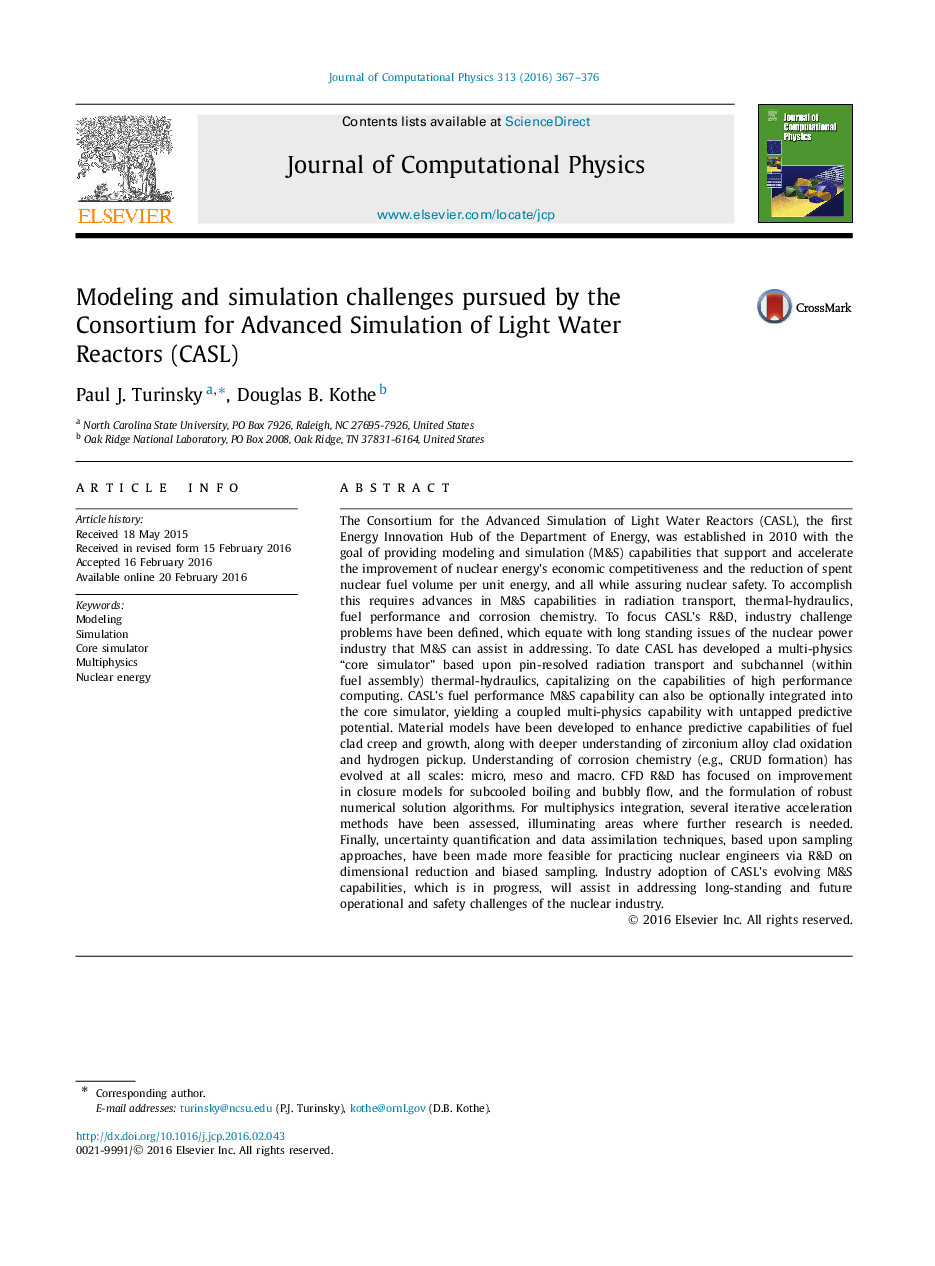| کد مقاله | کد نشریه | سال انتشار | مقاله انگلیسی | نسخه تمام متن |
|---|---|---|---|---|
| 519590 | 867672 | 2016 | 10 صفحه PDF | دانلود رایگان |

• Complexity of physics based modeling of light water reactor cores being addressed.
• Capability developed to help address problems that have challenged the nuclear power industry.
• Simulation capabilities that take advantage of high performance computing developed.
The Consortium for the Advanced Simulation of Light Water Reactors (CASL), the first Energy Innovation Hub of the Department of Energy, was established in 2010 with the goal of providing modeling and simulation (M&S) capabilities that support and accelerate the improvement of nuclear energy's economic competitiveness and the reduction of spent nuclear fuel volume per unit energy, and all while assuring nuclear safety. To accomplish this requires advances in M&S capabilities in radiation transport, thermal-hydraulics, fuel performance and corrosion chemistry. To focus CASL's R&D, industry challenge problems have been defined, which equate with long standing issues of the nuclear power industry that M&S can assist in addressing. To date CASL has developed a multi-physics “core simulator” based upon pin-resolved radiation transport and subchannel (within fuel assembly) thermal-hydraulics, capitalizing on the capabilities of high performance computing. CASL's fuel performance M&S capability can also be optionally integrated into the core simulator, yielding a coupled multi-physics capability with untapped predictive potential. Material models have been developed to enhance predictive capabilities of fuel clad creep and growth, along with deeper understanding of zirconium alloy clad oxidation and hydrogen pickup. Understanding of corrosion chemistry (e.g., CRUD formation) has evolved at all scales: micro, meso and macro. CFD R&D has focused on improvement in closure models for subcooled boiling and bubbly flow, and the formulation of robust numerical solution algorithms. For multiphysics integration, several iterative acceleration methods have been assessed, illuminating areas where further research is needed. Finally, uncertainty quantification and data assimilation techniques, based upon sampling approaches, have been made more feasible for practicing nuclear engineers via R&D on dimensional reduction and biased sampling. Industry adoption of CASL's evolving M&S capabilities, which is in progress, will assist in addressing long-standing and future operational and safety challenges of the nuclear industry.
Journal: Journal of Computational Physics - Volume 313, 15 May 2016, Pages 367–376